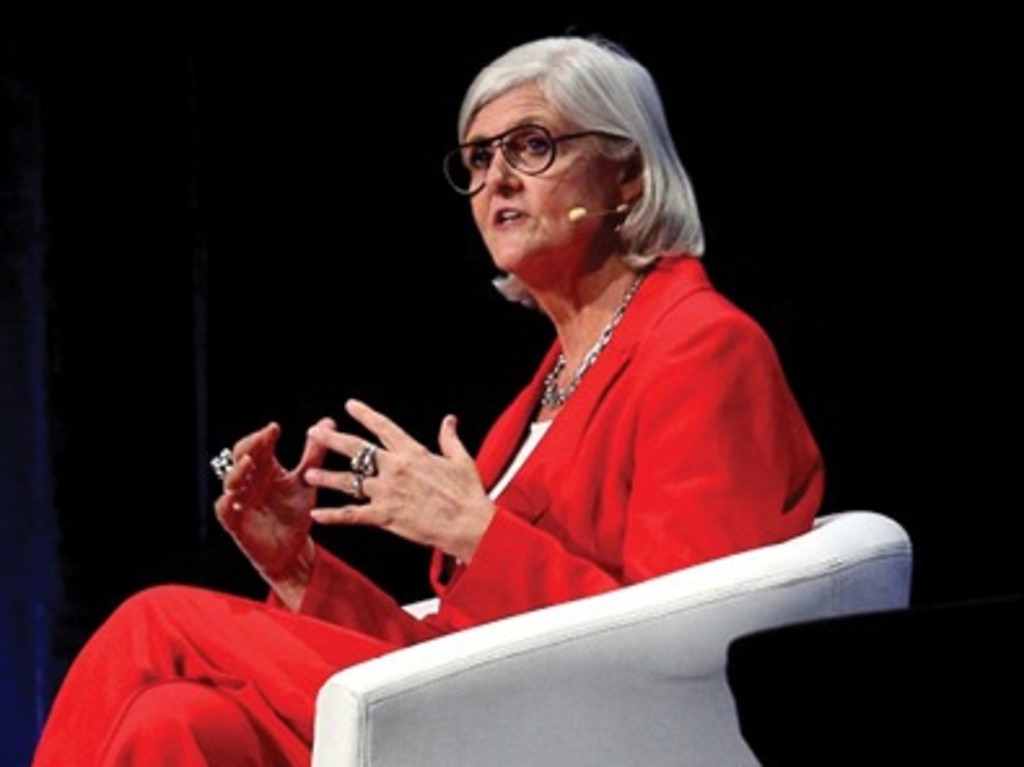NSW Chief Justice Andrew Bell warns of ‘unsustainable’ judge workloads
The most senior legal authority in NSW has raised the alarm on behalf of an overburdened judiciary, saying poor resourcing and heavy caseloads are driving judges into early retirements | Watch the video

NSW Chief Justice Andrew Bell has made a rare public intervention over a state judiciary that he warns is overwhelmed by workloads that are “neither personally nor institutionally sustainable” and appealed for government funding and public sympathy.
Marking the International Day for Judicial Wellbeing in an exclusive interview with The Australian, Justice Bell recounted the mental health risks facing the state’s judiciary, raising the alarm for a solitary career increasingly exposed to public scrutiny.
“It all comes down to support, but not just from the heads of jurisdictions. You need proper support from government,” he said. “You need proper resources. You need sufficient numbers of judges, and their facilities have to be decent.”
NSW’s most senior legal mind reflected on the risks facing a modernising court system and his role as an ambassador to the public with public understanding of the courts wavering and civics education at its lowest ebb since 2004.
“At the most extreme level, we’ve seen some cases in relatively recent history … where judges or magistrates have taken their own lives; the pressure of work, the burden of it, has become too much,” Chief Justice Bell said.
“It’s critical that judges themselves are not constantly exhausted, and there’s a risk of vicarious trauma if you’re dealing with serious sexual assault cases day after day, or dealing with child abuse cases or child pornography. That diet of work can have an impact.”
Poor resourcing has been equally strenuous, with recent setbacks such as the indefinite closure of the Downing Centre courthouse throwing the system into disarray at the expense of litigants and judges overseeing them.
Advances in criminology and the necessary shift to online hearings during the Covid pandemic drove a rapid modernisation within the court system, but Chief Justice Bell said technology carried its own set of risks for the court system.
“One of the modern challenges is judges being trolled. Judges who give particular decisions in high profile or controversial matters are often the subject of highly intense coverage by not only the fourth estate, but what I call the fifth estate: social media,” he said. “Anybody in any job should have a feeling of safety in their job. That’s perhaps particularly acute for judges.”
The complexity of evidence has also steadily risen with time, placing greater demands on the judiciary.
“One of the biggest challenges ahead, in my view, is the role of AI and deepfake evidence,” Chief Justice Bell said. “Whether that be photographs, video or fabricated documents, which have a real verisimilitude. Seeking to distinguish and rule on the integrity of evidence will become more challenging as people exploit the possibilities of AI. It’s all part of being a modern judge.”
The expectations for a “modern judge” however, were remarkably high, he said. Some 8650 matters were filed to the NSW Supreme Court last year, split among 330 members of the state judiciary. More than 3100 bail applications were filed in the same period, a 24 per cent rise year on year
The District Court similarly fielded 1872 criminal trials listed for hearing, a 14 per cent rise, of which 61.9 per cent reached a verdict. Trials averaged at 11 days.

The Local Court’s 150 magistrates faced a sweeping majority of the state’s cases, regularly fielding more than 100 cases a day.
Last year, almost 400,000 criminal cases were launched in the NSW local courts, along with 67,800 civil matters. Almost half of that caseload was domestic and family violence-related.
“Cranky judges do not present a good face for the justice system. But judges … are overtired or dealing with very difficult cases,” Chief Justice Bell said.
Victorian magistrates Jacinta Dwyer and Stephen Myall committed suicide in 2017 and 2018, prompting coronial inquiries that pointed to the tangible impact of burdensome caseloads and media pressure. Federal Circuit Court judge Guy Andrew was found dead by suicide in 2020.
Premature retirement also remains a common problem.
“This issue is confronting,” Chief Justice Bell said. “Being a good judge is not just a function of technical ability, it’s also experience. The more experienced you are, coupled with good technical ability, the better a judge you will be. So losing judges prematurely is a cost to the community and a cost to society, because you’re losing somebody who should be getting better, and better.”
Chief Justice Bell was quick to caution that while the work of a judge was solitary, a rich collegiality within the field helped guide new entrants through the prestigious career.
“In the old days, someone would finish at the bar prior to appointment on a Friday and start as a judge on a Monday,” he said. “They were really thrown into the deep end; that no longer happens.
“You do have to start somewhere, and it’s quite a significant change, but we have a whole series of orientation steps.
“While judicial work is solitary, there’s also a strong sense of institution. People relate to the institution of the court.
“Internally, that means that we engage with each other. Obviously, we’re dealing with our own cases, but there’s a good culture of … support and shared pride in the importance of what we’re doing.”
NSW Attorney-General Michael Daley said he was “focused on supporting our magistrates and judges”.
“I acknowledge Justice Bell’s comments, and the significant and challenging workload carried by those on the bench,” he said.
“We are investing in court infrastructure and have made recent changes including centralising bail hearings to streamline the workload of the courts.”




To join the conversation, please log in. Don't have an account? Register
Join the conversation, you are commenting as Logout